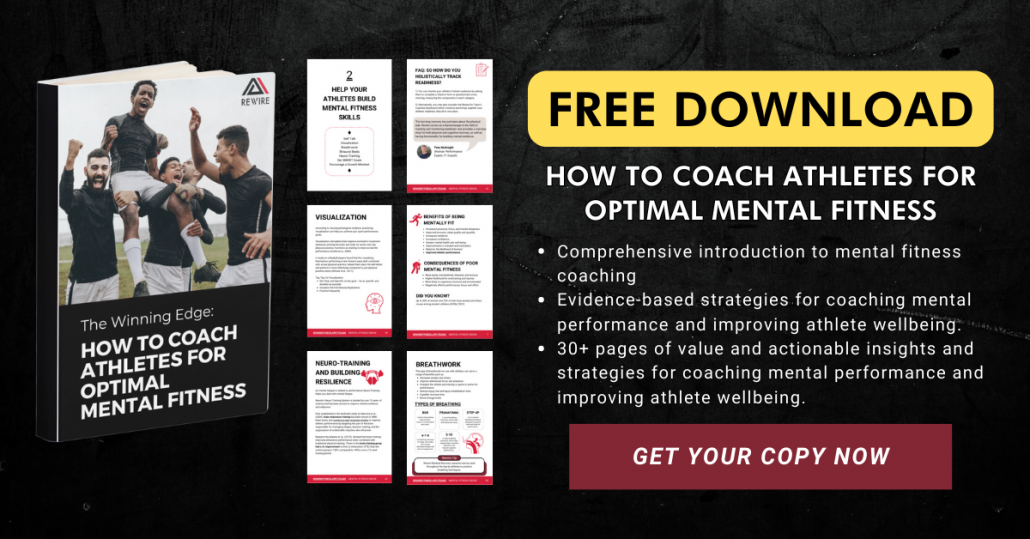5 Ways to Prevent Athlete Burnout in 2023
Understand how to prevent athlete burnout to stay motivated and reduce your risk of injury.
One minute, you’re enjoying training more than ever, and the next, you can’t focus, you don’t want to head out for that training session, and you feel as if that short-lived motivation has been zapped out of your system. So, what happened?
You could be experiencing early signs of athlete burnout — often described as a prolonged experience of physical and emotional exhaustion [4]. Knowing how to recognise and prevent athlete burnout is key — the more you know, the easier it is to stop burnout in its tracks, stopping you from experiencing more severe symptoms and perhaps even an increased risk of picking up an injury.
In this blog post, we’ll provide you with 5 ways to prevent athlete burnout — helping you stay motivated and focused on your training.
What causes athlete burnout?
Before we dive into how to prevent athlete burnout, we first need to understand what causes athlete burnout.
We’ll give you the CliffNotes version — but if you want to find out more about the causes and how to overcome burnout, you can listen to our podcast with Joe Fuggle, a former Elite GB athlete.
The research surrounding athlete burnout is somewhat conflicting. Some researchers say burnout is caused by the inability to effectively cope with psychosocial stress involved with training and competition [3].
On the other hand, others suggest athlete burnout is caused by a mix of factors, including entrapment (high investment, low alternative attractiveness), antecedents (school/work demands, a lack of recovery), and personality and coping factors (low social support, lack of coping skills [5].
Athlete burnout is more complex than it initially appears… but knowing how to prevent it can keep those feelings of decreased motivation and drive at bay.
How to prevent athlete burnout
Okay, now that you know what it is, let’s discuss how to prevent athlete burnout — after all, that’s why you’re here…
- Maintain variety and keep it fun
- Monitor your training load and know the burnout signs
- Prioritise getting quality sleep
- Introduce scheduled periods of rest
- Use Rewire to reduce stress and lessen your risk of burnout
1) Maintain Variety and Keep it Fun
Dr Ralph Richards, a former swim coach and sports scientist at the Australian Institute of Sport, mentioned the importance of providing variety in workouts to reduce mental fatigue [6]. This is also a great way to keep your workouts and training fun and interesting.
If you’re a runner, that could mean switching up a session to include some fartlek work (unstructured speed training). A cyclist could add short sweet spot efforts in their weekly long ride. And a swimmer could combine short and long repetitions for a little variety.
Ultimately, if you can keep things interesting, fun, and even slightly unpredictable, you’re more likely to enjoy training.
So, don’t be afraid to switch things up from time to time — this is also a great reminder for coaches and an excellent tool for keeping youth athletes motivated.
2) Monitor your training load and know the burnout signs
You wouldn’t run a marathon without former training — so avoid taking the same approach with your training.
Progressive overload is key. Don’t jump in the deep end before learning to swim in the shallow waters.
Gradually increase your training demands over time, allowing your body to adapt and recover without increasing your risk of injury and burnout.
You should also monitor your training load — note down each session, including what the workout comprised of, how you felt, and any other relevant notes. It also helps to track your recovery to improve your awareness of how your body adapts and responds to increased training loads.
You should also familiarise yourself with the symptoms of overtraining and burnout — the sooner you recognise these, the easier it is to dial back your training, prioritising recovery and preventing a more serious risk of burnout and physical injury.
Symptoms of overtraining and burnout may include [8,5]:
- A loss of appetite
- Muscle soreness & muscle twitches
- A decrease in motivation and focus during training
- Frustration over a lack of results
- Increased stress
- Mood disturbances
- A lack of control
- You find yourself getting sick easier (e.g., colds, sniffles, and coughs)
3) Prioritise getting quality sleep
You likely already know the importance of a good night’s rest, especially if you exercise regularly or compete at a high level — sleep is essential to recovery.
Increased training loads, whether that means increasing your weekly mileage, adding more intensity, or adding an extra weights session, increase your risk of fatigue, injury, and overtraining.
But more importantly, an increased training load combined with inadequate rest (including sleep) could serve as a risk factor and an indicator of over-reaching and overtraining syndrome [7].
And for those unaware, overtraining syndrome is often associated with athlete burnout.
Ensure you get plenty of quality sleep to lessen the risk of over-reaching (the point before overtraining and burnout).
4) Introduce scheduled periods of rest
Professional athletes take breaks during their season and once their competitive season is over.
For example, Formula One drivers have a summer break midseason and a longer break before the next season begins. Road cyclists take a few weeks off in the winter before the next year of competition begins. And football players have anywhere from 1 to 3 weeks off training each year.
For elite athletes, these scheduled periods of rest are not only a time to physically recover from any niggles, pains, or injuries, but it’s also a time to mentally recover and prepare for the next season.
Competing and training at the highest level is physically, emotionally, and mentally demanding.
Even if you’re not a professional athlete, introducing your own off-season into your training can help you recover. It’s a time to switch off, mentally recharge, and assess your goals going forward. Moreover, if you train for countless hours, then it’s time to spend doing other things you enjoy — whether visiting family and friends or just sitting on the sofa catching up on the latest Netflix thriller.
You can also use periodisation in your training — add 1 week of less intense training every 1 to 3 months to reduce your risk of burnout.
5) Use Rewire to reduce stress and lessen your risk of burnout
The relationship between stress and burnout has been studied extensively — some research [1] suggests stress causes burnout, and other work [2] proposes the opposite: stress is a burnout symptom.
Nevertheless, we all experience stress — whether you’re a professional athlete, you run marathons, you participate in ultra-endurance cycling events, or perhaps you enjoy a parkrun on the weekends.
But I’m sure we can all agree that reducing stress is not a bad thing…
You can start using the Rewire Fitness app today for free to help reduce stress, improve your mental fitness, and reduce your risk of burnout.
FAQs
What causes athlete burnout?
There are many possible causes, but minimising stress, prioritising rest, and keeping training fun are great ways to reduce the risk.
How do athletes recover from burnout?
Rest is key to recovering from athlete burnout. Athletes often need time away from their sport to rejuvenate and recover.
How to prevent burnout?
Keep training fun, monitor your training load, prioritise quality sleep, use periodisation in your training, and use the Rewire app to prevent athlete burnout.
References:
ACSM_CMS. 2022. News Detail. [online] Available at: <https://www.acsm.org/news-detail/2021/08/09/the-american-college-of-sports-medicine-statement-on-mental-health-challenges-for-athletes#:~:text=Professional%20and%20elite%20athletes%20also,%2C%20depression%20and%2For%20anxiety> [Accessed 20 December 2022].
Coakley, J., 1992. Burnout among adolescent athletes: A personal failure or social problem?. Sociology of sport journal, 9(3), pp.271-285.
Eklund, R.C. and DeFreese, J.D., 2015. Athlete burnout: What we know, what we could know, and how we can find out more. International Journal of Applied Sports Sciences, 27(2), pp.63-75.
Gustafsson, H., 2007. Burnout in competitive and elite athletes (Doctoral dissertation, Örebro universitetsbibliotek).
Gustafsson, H., Kenttä, G. and Hassmén, P., 2011. Athlete burnout: An integrated model and future research directions. International Review of Sport and Exercise Psychology, 4(1), pp.3-24.
https://memberdesq.sportstg.com/assets/console/customitem/attachments/burnout-rrichards.pdf
Lastella, M., Vincent, G.E., Duffield, R., Roach, G.D., Halson, S.L., Heales, L.J. and Sargent, C., 2018. Can sleep be used as an indicator of overreaching and overtraining in athletes?. Frontiers in physiology, p.436.
Winsley, R. and Matos, N., 2011. Overtraining and elite young athletes. The elite young athlete, 56, pp.97-105.




